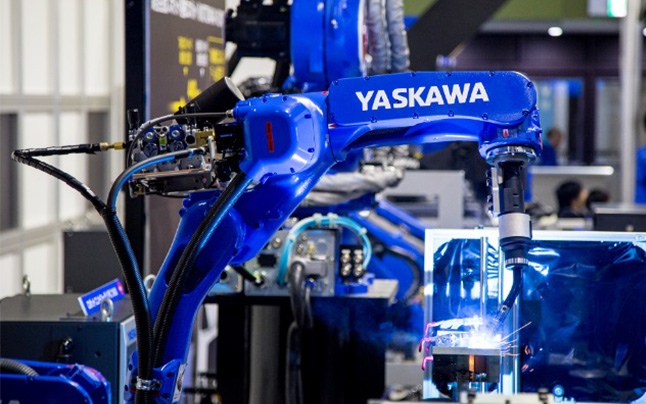The development of Industry 4.0 has considerably spread the use of industrial robotic automation systems, making them affordable even for small companies.
The need to increase efficiency in production and develop new business paths has meant that, in the industrial sector, robots have reached such an importance that it is almost impossible to imagine doing some jobs without their help.
WHAT IS INDUSTRIAL ROBOTIC AUTOMATION?
To understand what industrial robotic automation is and how it works, it is necessary to separately analyze the terms that compose it.
The term industrial automation refers to the set of technologies that use control systems for the automated management of industrial machinery and production lines. In this way, the need for human intervention is limited to those operations characterized by repetitiveness and complexity and in all those activities that require a greater degree of repeatability.
Industrial robotics is a secondary area that involves the use of robots to support human operators in some processes, improving their ergonomics or increasing their speed. Thanks to the robotization of processes (Robotic Process Automation) it is therefore possible to obtain production increases, lower costs, greater precision and reliability.
A robot is a reprogrammable multifunction machine capable of carrying out a series of tasks autonomously or semi-autonomously. It can, for example, perform exclusively mechanical and repetitive tasks, manage objects through previously programmed movements, or adapt its behaviour to the environmental and process context, thanks to the use of sensor and / or artificial intelligence solutions. In this case, the system acquires data, processes them and adjusts the operation of the machine accordingly.
The use of industrial robotic automation solutions, born in the assembly line to replace humans with robots and automated systems capable of taking on repetitive and tiring tasks ensuring high speeds, has now expanded to very different application realities, for example thanks to the use of artificial intelligence or human-robot collaboration solutions. The fields of application are therefore multiplying, in the light of the current and future developments of this technology, as well as the advantages for those who automate industrial processes.
WHAT ARE THE ADVANTAGES FOR INDUSTRIES?
The advantages given by implementing automated robotic processes are numerous, but we can mainly reduce them to three categories: productivity, precision and efficiency. For example, the use of robots can:
- spare resources repetitive tasks with low added value, allowing them to be allocated to activities that have a greater impact on the company;
- perform burdensome operations or safeguard the health of the human operator, replacing them in particularly burdensome and tiring tasks or in activities involving exposure to potentially hazardous substances;
- reduce the risk of oversights and errors, thanks to the high and – above all – constant degree of precision of the operations. You can also accurately schedule processes, tests, updates and workflows, always knowing in advance how long they will last and how consistent the results will be;
- increase business productivity thanks to potentially 24/7 operativity. Furthermore, in particular situations, such as the current one, robotic automation has made it possible to guarantee work continuity and a flexible response to processing variations, sudden staff reductions and demand peaks in the most diverse sectors.
In order to meet the needs of its customers and provide the ideal solution for all production needs, by automating and speeding up processes, Promotech has chosen Yaskawa MOTOMAN robots.
MAXIMUM QUALITY COMBINED WITH EXCEPTIONAL PERFORMANCE: THE YASKAWA MOTOMAN ROBOTS.
Characterized by unparalleled efficiency, Yaskawa MOTOMAN robots are available in different series and are widely used in any sector and application.
- GP SERIES: versatile par excellence – GP stands for General Purpose – these 6-axis robots stand out for their compactness and speed. With payload options from 7 to 600 kg and IP67 rating for use in harsh environments, MOTOMAN GP robots are easy to configure, integrate and maintain.
- PL SERIES: specially designed for end-of-line automation, the 4-axis robots of the PL family can move boxes and fill pallets with ease and precision, thanks to a load capacity from 190 to 500 kg and a horizontal reach up to 3159 mm.
- MotoMINI: is the smallest robot in the MOTOMAN family, MotoMINI weighs only 7 kg, a payload of 500 g and the maximum acceleration available for a robot of this size. It provides 20% faster speed than equivalent sized robots on the market today, which means reduced cycle times and increased productivity.
- HC SERIES: accessible, versatile, easy to use, the 6-axis hybrid robots of the HC series combine the stability and high movement speeds of an industrial robot with collaboration with humans based on the safe limitation of contact forces, according to ISO TS15066 technical specifications.
- AR SERIES: True specialists in their field, MOTOMAN AR six-axis robots offer accurate performance for the high demands of arc welding applications. With working ranges from 700 to 3,124 mm, these robots support the welding of many types of parts and assemble a wide variety of welding and cutting equipment.
For more information, please contact us: we are at your disposal to answer your questions and to satisfy your needs.
Visit our e-shop!

